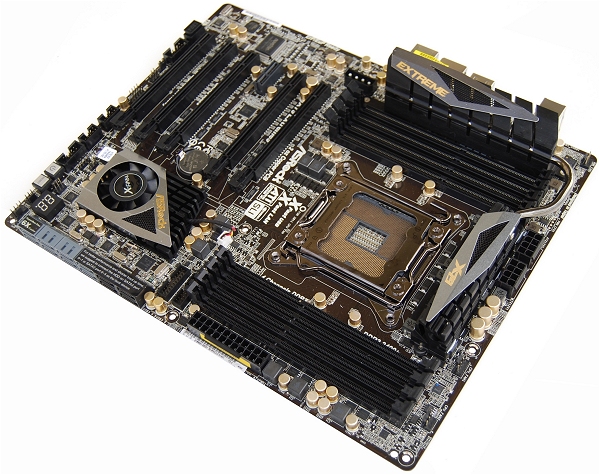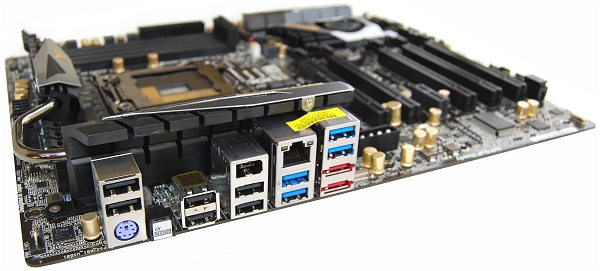Asrock X79 Extreme9
Asrock offered the best bang for the buck in previous motherboard roundups, offering respectable features at unbeatable prices. At first glance, the X79 Extreme9 seems to buck that trend with an intimidating price of $345, but that price seems justified based on the spec sheet alone.

Whereas the Asus P9X79 Deluxe was limited to 3-way SLI, the X79 Extreme9 supports four Nvidia and AMD GPUs using PCIe x8/x8/x8/x8 – at least on paper, anyway. Although the technology is there, the board doesn't seem to have enough room for four individual dual-slot cards.

The X79 Extreme9 has eight DIMM slots for up to 64GB of RAM. Using the chipset's quad-channel memory architecture, it supports frequencies of 1866, 1600, 1333 and 1066MHz, while 2400 and 2133MHz are possible with overclocking – no different than you'll find on Asus' contender.

Whereas the X79 chipset provides six SATA ports (two 6Gb/s), Asrock has included three Marvell 6Gb/s controllers for another six ports: the Marvell SE9172 provides four SATA 6Gb/s ports, while the Marvell SE9220 supplies two more. One of the SE9172 chips backs a pair of eSATA 6Gb/s ports on the I/O panel.

Network connectivity comes from two Broadcom BCM57781 controllers, which support Wake-On-LAN, Energy Efficient Ethernet 802.3az and Teaming. The configuration is a little unusual as just one of the two Gigabit Ethernet ports can actually be found on the I/O panel. The other is located on Asrock's Game Blaster card (similar to Asus' Thunderbolt).
Along with the Broadcom part, the PCI Express x1 Game Blaster card supplies the X79 Extreme9's audio. Using the Creative Sound Core3D audio, it supports THX TruStudio PRO, CrystalVoice, EAX 5.0 and full Blu-ray Profile 2.0 Audio Decoder Support.

Asrock has tasked two Texas Instruments TUSB7340 controllers with delivering the X79 Extreme9 USB 3.0 connectivity. The TUSB7340 is a USB 3.0 xHCI compliant host controller supporting up to four downstream ports using PCIe x1 Gen 2. One controller powers four ports on the motherboard's I/O panel, while the other supports a pair of onboard headers for another four connectors.
The X79 Extreme9 also offers FireWire via the VIA VT6315N controller which uses the PCIe x1 interface and supports two 400Mb/s IEEE1394a ports (one via the I/O panel, one via header).


While the Asus P9X79 Deluxe has a Digital 16 + 4 Phase CPU power design, the Asrock X79 Extreme9 uses a Digital 16 + 2 Phase CPU set up. There are 16 phases for the CPU and 2 phases for the System Agent. We expect this to yield similar enough results to Asus' configuration.


We have few qualms about Asrock's design, though the X79 chip is cooled by a small 35mm fan, which are notoriously unreliable. You'll find similar features to Asus' board, including onboard power and reset buttons as well as a diagnostic LED screen. Asrock's UEFI BIOS is well designed, making it easy to navigate all the settings.

Based on this preliminary overview, the X79 Extreme9 is quite impressive and we think enthusiasts upgrading to LGA2011 will find plenty of reasons to justify its steep admission fee.
